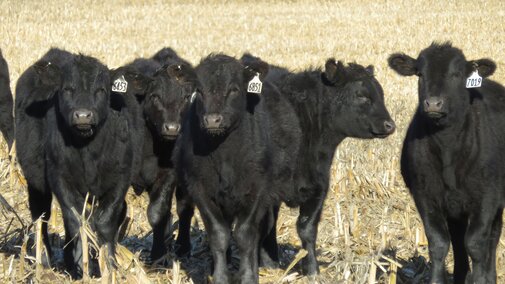Many crop producers are concerned that trampling from cattle grazing corn residue negatively affects crop yields. But when grazed at proper stocking rates, small, but positive effects on crop production after grazing have been observed. Research conducted at the University of Nebraska has shown that grazing corn residue at the recommended stocking rate does not reduce corn or soybean yields in irrigated fields the following growing season.
In fact, a long-term study in eastern Nebraska at the Eastern Research and Extension Center showed two to three bushel per acre improvements for soybean production following grazed corn residue in a corn-soybean rotation. This result was the same whether cattle grazed in the fall from November through January or spring from February through April. A five-year study in western Nebraska measured corn yields from continuous corn after cattle grazing in the fall and found no negative effects on corn yields the following year.
It must be noted that minor surface compaction can result from grazing during wet weather. However, this compaction often disappears through the natural wetting and drying and freezing and thawing processes. The compaction level for restricting root growth does not carry over into the following growing season.
Grazing corn residue benefits both cattle and crop producers. Corn residue should be viewed as an economical source of winter roughage for cattle that can provide an extra source of income from corn production that does not affect next year's crop production. If you are interested in listing crop residue fields available for winter grazing and connecting with livestock producers, sign up on the Crop Residue Exchange.
The Crop Residue Exchange is made possible with funding support from Nebraska Extension, the Northern Plains Climate Hub and the University of Nebraska Institute of Agriculture and Natural Resources Beef Systems Initiative.

